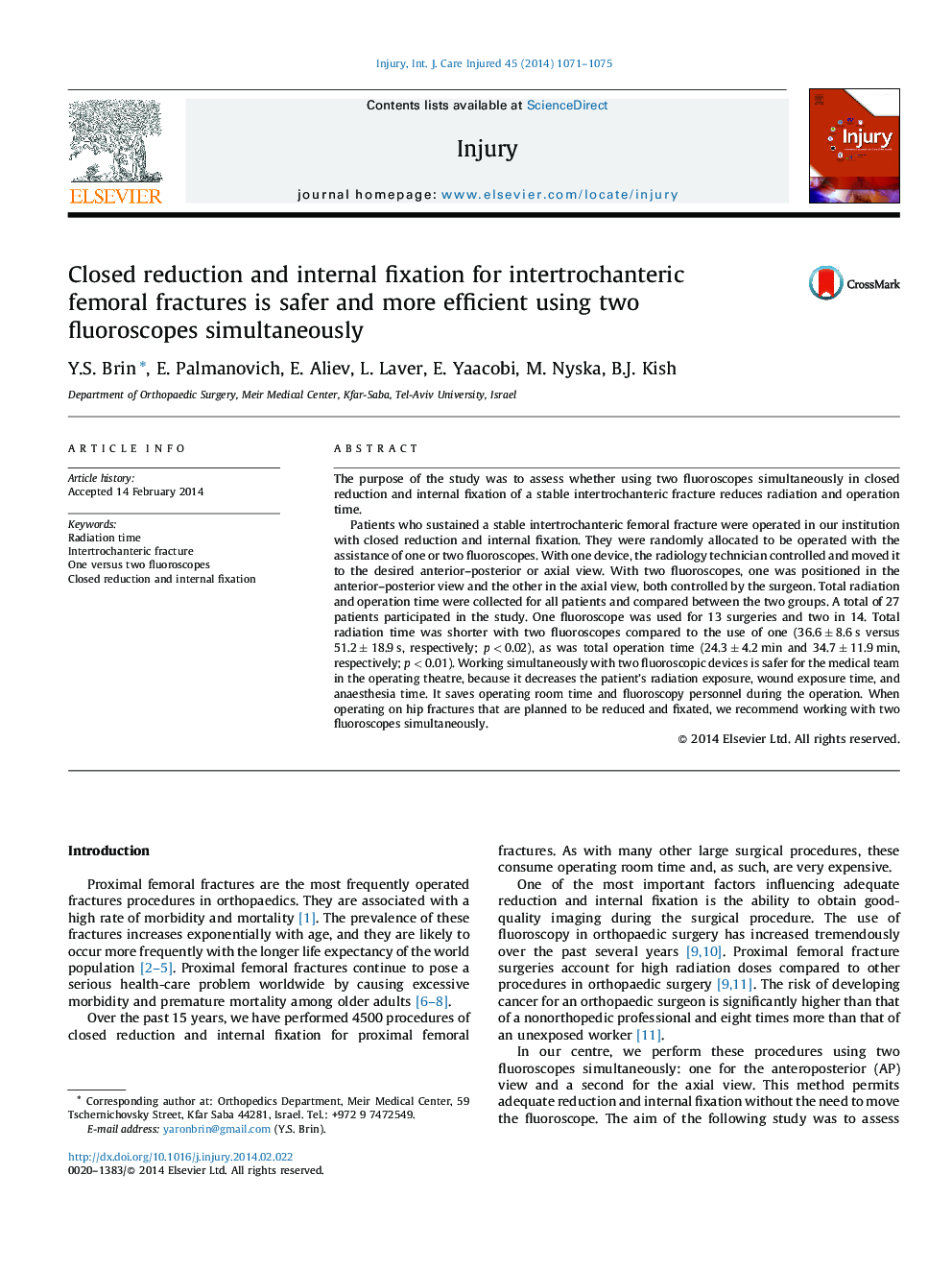| Article ID | Journal | Published Year | Pages | File Type |
|---|---|---|---|---|
| 3239403 | Injury | 2014 | 5 Pages |
The purpose of the study was to assess whether using two fluoroscopes simultaneously in closed reduction and internal fixation of a stable intertrochanteric fracture reduces radiation and operation time.Patients who sustained a stable intertrochanteric femoral fracture were operated in our institution with closed reduction and internal fixation. They were randomly allocated to be operated with the assistance of one or two fluoroscopes. With one device, the radiology technician controlled and moved it to the desired anterior–posterior or axial view. With two fluoroscopes, one was positioned in the anterior–posterior view and the other in the axial view, both controlled by the surgeon. Total radiation and operation time were collected for all patients and compared between the two groups. A total of 27 patients participated in the study. One fluoroscope was used for 13 surgeries and two in 14. Total radiation time was shorter with two fluoroscopes compared to the use of one (36.6 ± 8.6 s versus 51.2 ± 18.9 s, respectively; p < 0.02), as was total operation time (24.3 ± 4.2 min and 34.7 ± 11.9 min, respectively; p < 0.01). Working simultaneously with two fluoroscopic devices is safer for the medical team in the operating theatre, because it decreases the patient's radiation exposure, wound exposure time, and anaesthesia time. It saves operating room time and fluoroscopy personnel during the operation. When operating on hip fractures that are planned to be reduced and fixated, we recommend working with two fluoroscopes simultaneously.
